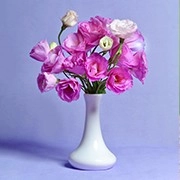Creating Spatial Impact

Sculpture is a three-dimensional art form, and its sense of space is one of its greatest charms. Unlike flat art, sculpture is not simply a visual display; it interacts with the surrounding space to convey emotions and ideas.
We all know that a sculpture is not just a static shape. It creates a powerful visual impact through volume, layers, and changes in perspective, drawing us into its world. Today, we'll explore how sculptures use their sense of space to break through the flatness of two dimensions and create unforgettable 3D art experiences.
Understanding the Concept of Space in Sculpture
Space is at the heart of sculpture. What sets sculpture apart from other art forms is its existence in real three-dimensional space. Sculptures are typically viewed from multiple angles and need to be experienced interactively. The "sense of space" in sculpture refers to how it affects our perception through volume, position, and the relationship with its environment. For example, when faced with a giant sculpture, the contrast between its size and the surrounding space can evoke a sense of awe. On the other hand, small sculptures often rely on intricate details and precise placement to create a different kind of spatial impact.
Exploring the Transition from Three-Act Plays to Nonlinear Storytelling.
How to Turn Everyday Life Into Thoughtful Literary Works?
Just found: glowing bugs, ghostly plants, and more! These species shock scientists—and remind us how little we know, and risk losing.
Top 5 Phenomenal Young People Books and Their Blockbuster Film Adaptations.
Thought the flu shot gives you the flu? Think again! This myth-busting truth might just blow your mind—and calm your fears.
Are we upgrading or unraveling? Dive into a jaw-dropping look at how evolution and tech may reshape us beyond belief.
Elements That Contribute to Spatial Impact
The sense of space in sculpture is created by several key elements. First is proportion. The size of the sculpture in relation to its environment plays a critical role in its visual impact. Imagine standing in front of a massive sculpture—you'll feel a sense of awe and sometimes intimidation due to its scale. This proportional relationship is often carefully designed by the artist to create visual shock. Conversely, small sculptures might emphasize fine details, precise shapes, and material choices, highlighting a different type of spatial experience.
Secondly, material choice is vital. The hardness, luster, and texture of materials also influence how the sculpture interacts with its space. For instance, a metal sculpture reflects light, while a stone sculpture might convey a sense of permanence and solidity. The materials not only determine the look of the sculpture but also enhance or diminish the connection between the piece and its environment.
Lastly, movement is an important factor that influences spatial perception. Some sculptures create the illusion of motion through dynamic designs or changing forms, which gives the viewer the impression that the piece is in motion. This dynamic spatial effect, which shifts depending on the viewer's angle, draws attention and keeps the viewer engaged, creating both a visual and emotional impact.

How Artists Manipulate Space to Create Impact?
Artists use various techniques to manipulate space and create stunning visual effects. For instance, Michelangelo's David masterpiece exemplifies the extreme use of space through proportion. By highlighting David's muscular lines and stance, Michelangelo creates a dynamic spatial effect that makes the sculpture seem full of life and power. In modern sculptures, artists often break traditional spatial structures by using displacement, floating elements, or overlapping shapes. These unconventional techniques force the viewer to reimagine space and evoke a sense of “disorganization” that adds to the visual impact.
The Role of Viewpoint in Sculptural Impact
The spatial effect of a sculpture isn't just defined by its form; it is also heavily influenced by the viewpoint of the viewer. We cannot appreciate a sculpture from just one fixed perspective. Many sculptures are intentionally designed to be viewed from multiple angles, allowing the viewer to discover new layers and details from each vantage point. For example, Auguste Rodin's The Thinker presents a different emotional experience from each angle, allowing the audience to feel and understand the sculpture more deeply by moving around it.
Why Spatial Awareness in Sculpture Matters?
The sense of space in sculpture is not just about aesthetics; it also conveys the artist's intentions. The use of space transforms the sculpture from a static object to something that can engage the viewer, stir emotions, and provoke thought. When we stand in front of a sculpture, observing its shape and spatial relationship, we're not just seeing an object—we're experiencing a story, an emotion, or a cultural message. The artist uses space as a tool to communicate these deeper meanings, making sculpture more than just visual art, but an interactive, expressive experience.

Conclusion: The Power of Space in Sculpture
In conclusion, sculpture, as a three-dimensional art form, creates profound visual and emotional impact through the manipulation of space. From proportion and material choice to dynamic design, the elements of spatial awareness push the boundaries of the artist's creativity. Sculpture invites us not only to see shapes and lines but to experience depth, emotion, and space in new ways, providing a unique visual and psychological experience. Each sculpture invites us to explore the limitless possibilities of space, sparking our own understanding of beauty and the world around us.
This article explored the role of space in sculpture and how it creates a powerful three-dimensional visual impact. We hope that in the future, you'll discover even more spatial beauty in sculptures. Have you had an experience where a sculpture left a lasting impression on you? What did it make you feel? We'd love to hear your thoughts.

 · News team
· News team